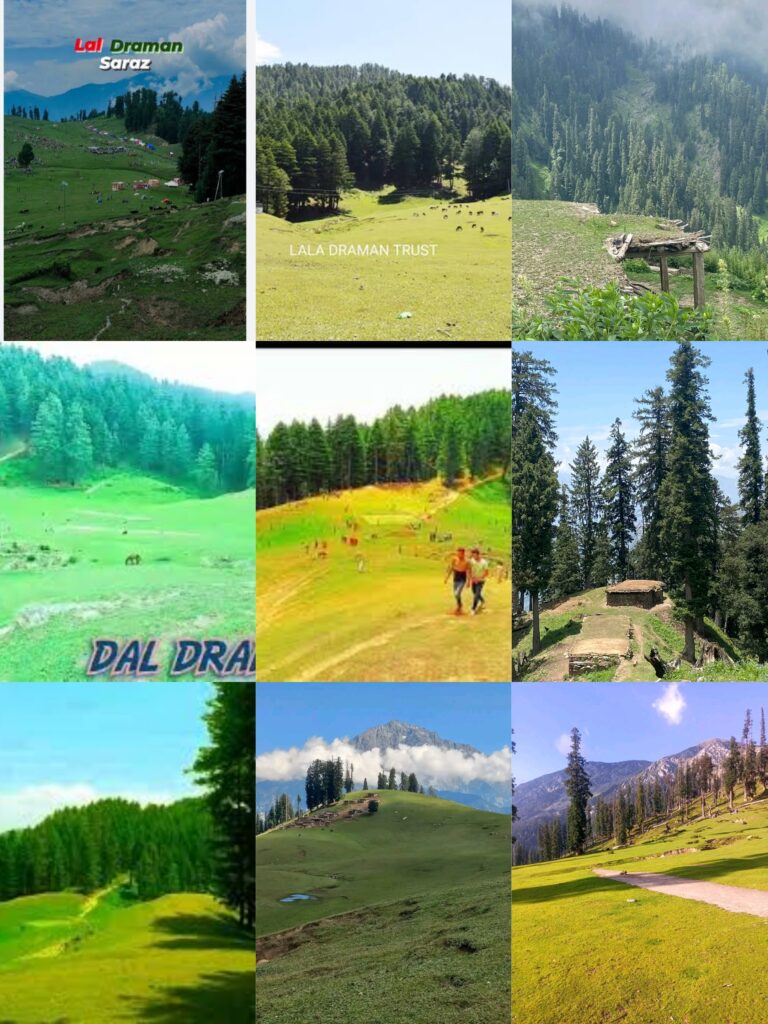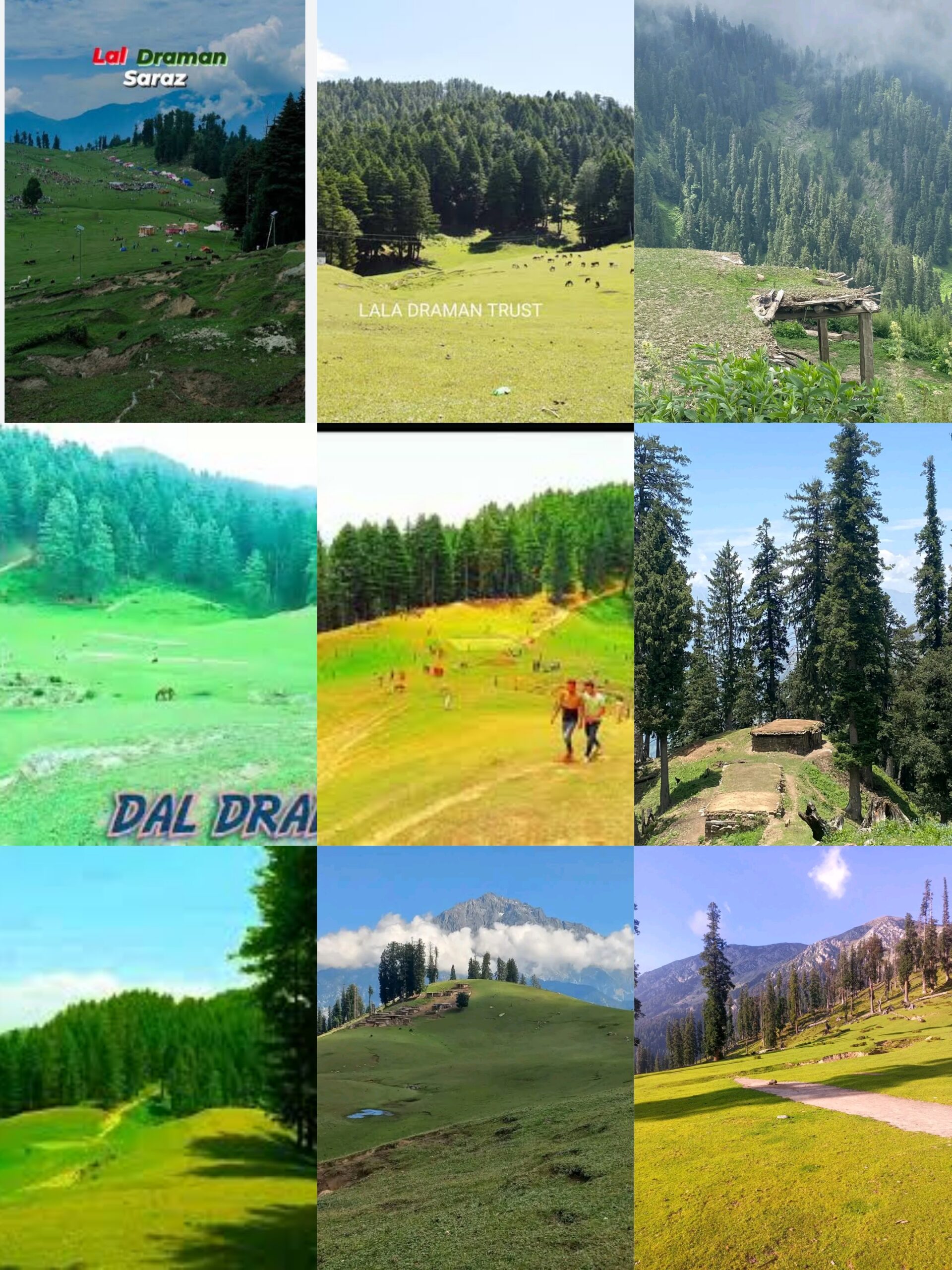By Mool Raj
In the heart of Jammu and Kashmir’s Chenab Valley, where mountain mists mingle with pine-scented air, lies a meadow that could rival Switzerland’s alpine postcards—if only the world knew about it. Lal Draman, just 21 kilometres northwest of Doda town, remains a largely undiscovered treasure. Known to locals as the “Red Meadow,” this landscape is a canvas of changing colours, shifting moods, and timeless charm—an overlooked jewel awaiting its rightful place on India’s tourism map.
A Meadow Out of a Painter’s Imagination
The Chenab Valley has always been a geography of superlatives—towering peaks like Hans Raj Top, lush valleys in Bhaderwah and Bhalessa, the rugged heights of Kishtwar and Padder, the deep green folds of Davigol, and the pastoral beauty of Pogal Paristan. In the 19th century, British geologist Frederick Drew wrote of this region’s “Pahari dwellers” and their rich cultural and linguistic heritage. More than a century later, his description remains uncannily accurate.
Within this vast canvas, Lal Draman feels like the artist’s flourish—the final, perfect brushstroke. In summer, the meadow ripples with wildflowers, a riot of colours under an indulgent blue sky. Shepherds lead their flocks through the grasslands, their silhouettes moving like slow shadows across the slopes. The climate stays mild, making it ideal for trekking, horse riding, and camping.
Then winter arrives, and Lal Draman changes costume. The meadows are buried under a thick quilt of snow, the pines heavy with frost. Adventure seekers arrive for skiing, snow zorbing, and winter treks. Local children hurtle down gentle slopes on makeshift sleds, their laughter ringing across the frozen expanse. It is a year-round stage, and every season writes its own play.
A Meadow with a Soul
What truly sets Lal Draman apart is not just its visual splendour but its quiet lessons in coexistence. At its heart stand a modest mosque and temple, side by side. There are no guards, no barricades—just two places of worship sharing a horizon. In an era when divisions often make headlines, Lal Draman offers a different narrative: here, faith is neighbourly, not adversarial.
This spirit of harmony extends to the communities living around the meadow. The people of Doda—Sirazi, Bhaderwahi, Kashmiri, Gujjar, and others—share languages, traditions, and a mutual respect that feels as natural as the wind through the deodars.
A Gateway to Adventure
The meadow is also a gateway to a constellation of other highland wonders—Makhan Baggi, Allah Kanda, Bal Padri, Rohari Dhar, Bhrami Top, Nargowari, Sarola Top, Bach Dhar. Each name is a promise of discovery, each destination a slightly different shade of beauty. Together they form an adventure corridor for trekkers, campers, and eco-tourists.
Trekking routes here are not just about reaching a destination but about the journey itself—passing by alpine springs, grazing yaks, and wild orchids. For the patient traveller, there’s always the possibility of spotting Himalayan monals or even elusive leopards.
The Winter Stage
For locals, Lal Draman’s highlight comes with the annual Snow Festival—a lively blend of sport, culture, and community pride. Imagine snow sculpting competitions taking shape against a backdrop of blue mountains, kabaddi matches on icy fields, and horse races where the animals’ breath turns to mist in the cold air.
The festival is also a showcase of regional talent—folk songs in Sirazi and Bhaderwahi, Kashmiri ballads, and Urdu poetry readings. Stalls serve steaming plates of rajma-chawal, mutton rogan josh, and crisp girda bread fresh from the tandoor. Traditional daku dance troupes twirl in colourful costumes while children, cheeks pink from the cold, chase each other through snowdrifts.
The 2024 edition, organised by the Tourism Department and Doda District Administration, was particularly successful. It drew thousands of visitors and earned praise for highlighting the area’s untapped tourism potential.
A Case for National Recognition
Yet, despite its many virtues, Lal Draman still lives in the shadow of better-known Himalayan destinations. Ask a Delhi or Mumbai traveller about Kashmir, and they’ll likely name Gulmarg, Pahalgam, or Sonamarg—but rarely Doda, and almost never Lal Draman.
This obscurity is not just an issue of pride—it has tangible consequences. Without national attention, the meadow risks being either neglected or overexploited without proper planning. With recognition, however, could come sustainable infrastructure: eco-friendly lodges, trained local guides, regulated adventure sports, and cultural preservation programmes.

The potential economic benefits are equally significant. Tourism can provide steady income for local communities, from homestay operators and trekking guides to artisans selling traditional handicrafts. Given Doda’s rich cultural traditions—wood carving, wool weaving, and folk music—tourism could become a powerful driver of both heritage preservation and livelihood generation.
A Vision for the Future
For Lal Draman to step into the national spotlight, a coordinated effort will be required. The Jammu and Kashmir Tourism Department has already taken positive steps with events like the Snow Festival. But broader promotion—through travel fairs, social media campaigns, and tie-ups with adventure tourism companies—could change the game.
Equally important is the preservation of Lal Draman’s fragile ecology. Sustainable tourism practices—waste management systems, restrictions on construction, and awareness campaigns—must be non-negotiable. After all, the meadow’s greatest asset is its unspoiled beauty, and that is a currency too valuable to squander.
A Meadow Waiting to Be Claimed
Standing on Lal Draman’s slopes, it is easy to feel that the place is telling you something—about patience, about harmony, about the power of landscapes to hold entire communities together. Its beauty is obvious; its message is quieter but just as profound.
In a country where tourism often gravitates to the already-famous, Lal Draman is a reminder that there are still hidden wonders waiting not just to be seen, but to be understood.
If the rest of India turns its gaze here, the Red Meadow could very well become a green (and white) chapter in the nation’s tourism story—one where natural beauty, cultural heritage, and communal harmony share the same horizon, just like the temple and mosque at its heart.
The views expressed in this article are solely those of the author and do not necessarily reflect the opinions or views of this newspaper
